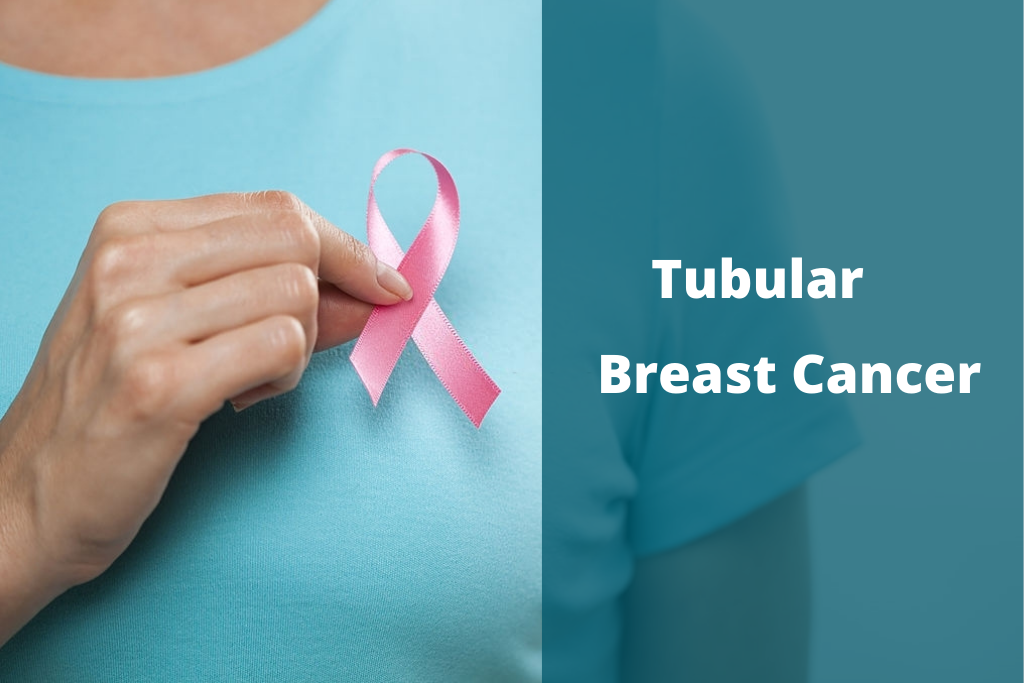Breast cancer is the second most common type of cancer after skin cancer in the United States. A lump on the breast is frightening, but with proper care and education you can make it through.
When cells divide and grow in an uncontrollable rate it usually forms into a tumor. Breast cancer is commonly found in women and rarely in men. It is a myth that men can steer clear of breast cancer.
Tubular Breast Cancer
Most often a tumor is formed in the mil producing glands. From there it spreads to the healthy tissues and then to the axillary nodes in the underarm. Once they enter the nodes the chance for spreading to other parts of the body is higher. What you need to look out for is how to restrict this spread.
Breast cancer occurs due to a genetic defect and only 5-10% of it can be traced to your parents making a good 90% of occurrence due to lifestyle choices. An extremely rare type of breast cancer is the Tubular Carcinoma of Breast or commonly called Tubular Breast Cancer. It accounts for about 8% of all breast cancer.
A rare type of invasive breast cancer is pretty common in women over 50 years of age. Men are rarely diagnosed with tubular breast cancer. The tubular breast cancer comes under the subtype, Invasive Ductal Carcinoma (IDC) as they have chances of spreading to other body parts but compared to other cancers, there is a lower rapidity in spreading.
At present times, thanks to awareness campaigns and programs women and men are educated enough to go for regular screening.
Tubular breast cancer is found inside the milk duct of women in a tube-shaped structure. It spreads to the nearby tissues at a slow rate. They are tiny in size with a measurement of 1cm or less and are visible under a microscope.
Grades are used to measure the cancer cells according to their speed of growth. Tubular breast cancer is low-grade cancer as their growth is very slow. This also means there is a higher chance for a good prognosis if diagnosed in the earliest stage. Since they are low grade, the treatment is comparatively uncomplicated.

A combination of steps is included to diagnose cancer ranging from breast self-exam to biopsy. Fine skill and accuracy are significant to find out if a patient has tubular breast cancer. A list of the following procedures is carried out by the doctor to clearly detect this type of cancer.
It is advised by doctors that both breasts be tested. As studies show that 5%- 37% of women who are diagnosed with tubular breast cancer in one of the breasts have a higher chance of getting cancer in another breast.
In the initial stage, there may not be any symptoms at all in regards to tubular breast cancer. Some symptoms that can occur which is general to all breast cancers may occur in the case of tubular breast cancer.
The safest precaution is to not wait for a sign but to get regular checkups. Along with that keeping, the following in check can help one be safer.

Fear may keep you away from consulting a doctor after you notice any of these symptoms. It is natural for you to be anxious. Make sure you consult a doctor at the earliest so that you don’t complicate your health or the treatment.
The best you can do is to get routine breast screenings. Most of these symptoms do not appear until later stages. Most women tend to be diagnosed with tubular breast cancer even before they have any symptoms.
Your doctor will discuss a treatment plan with you after proper diagnostic tests to specify what kind of cancer you have. The treatment also differentiates depending upon if you are diagnosed with only Pure Tubular Breast Cancer or if you have Invasive Ductal Carcinoma along with tubular breast cancer.
There can be circumstances when one of the breasts is affected by Tubular Breast Cancer while the other has a different type of breast cancer. The treatment is easier if you have Pure Tubular Breast Cancer as compared to having a mix of tubular breast cancer and invasive ductal carcinoma.
Depending upon the size of the tumor its chances for spreading to the axillary nodes in the underarms are higher. Studies say that 15% of the patients have a chance to spread if their tumor is large. The average size is 1 cm or less and in such cases the spread is rare.
Your doctor will suggest options according to the features of the tumor that includes its size, shape, kind. Cancer treatment, in general, including surgery and therapy. The same is the case for tubular breast cancer.
Surgery
There are two types of surgery depending on whether you have to remove a partial part of the breast or the entire breast. Sometimes if the lymph nodes are affected, you will have to remove it as well.
Lumpectomy
In this surgery, the tumor affected part of the breast is cut out. The lump like substance that you feel at touch is the tumor and that is removed. Some of the normal tissue surrounding it has chances of being affected and so they’re removed as well. If the tumor is large in size it may have spread to the axillary nodes, hence 1 or 2 nodes are removed to check for any such causes.

Mastectomy
The entire breast that contains the tumor is removed in this surgery. In the case of “Pure” Tubular Breast Cancer, there are low chances for this surgery. As the spread rate is very low there is less or no chance for the tumor to have divided and spread around.

Adjuvant Therapy
Therapies are ways to reduce the growth or completely stop cancer. There are various therapies that the doctors choose from according to your need and condition.
Radiation Therapy
This is more of follow-up treatment to a lumpectomy surgery. What it does is send high-energy rays to the area to destroy any remaining tumor cells. This is a standard treatment for Tubular Cancer

Hormonal Therapy
It is advisable for patients whose estrogen or progesterone receptors are positive. In this therapy, a patient consumes medication to regulate the effects of the hormones or to lower their growth in the body. But if the patient has tested negative on the receptor test, this therapy can be of no help.

Chemotherapy
There are chances that the cancer cells have spread to other parts of the body. Chemotherapy is a method of destroying these cells. A patient may opt from consuming anti-cancer medication or directly injecting the medicine into the vein. Generally, a tubular breast cancer patient doesn’t have to go for chemotherapy as it is low-grade cancer. But then, subjective to the features of the cancer patients may be prescribed chemotherapy.

According to the size of your tumor and the spread of it into the lymph nodes, the therapies are recommended by the doctors. A tumor less than 1cm par to it may with no spread to the nodes does not require chemotherapy or hormonal therapy after the surgery.
For a tumor between 1 and 2.9 cm with little cancer no spread to one of the nodes the doctor might suggest hormonal therapy. For tumors bigger than 3cm the doctors recommend hormonal therapy after the surgery. If more nodes are affected due to cancer, the doctors will prescribe chemotherapy.
Final Thoughts- Is Treatment The Closure?
Treatment isn’t the end! You have to go for follow-ups regularly. Monitoring after your surgeries or therapies is as important as the treatment itself. Once the surgery is over you are bound to be left with questions. How should my breast look? How long before the wound heals? Will the scare remain as it is?
Consult your doctor and educate yourself about how the breast and scar should feel. Your breast may feel sensitive or lumpy after the surgery and that is normal. There is always a risk of recurring breast cancer. What you can do is keep a check on the changes happening regularly and update the same to your physician. This way any chances for cancer can be attended to in the earlier stage itself.
An annual physical examination and medical history will be planned out for about 5 years after the surgery. In certain cases, it can be twice every year. This is to keep a history of changes that have occurred after the treatment.
If in case of a lumpectomy or mastectomy, you have to fix a date for a mammogram to find out if the cancer cells have completely been destroyed and that new cells haven’t grown.
If you’re someone on hormonal therapy you have to consult with your gynecologist every year because you have a chance to get cancer in your uterus. There is a chance that your bone density reduces due to early menopause or some of the medication that you intake. Regular checkup to see if you’re your bones are healthy or not is mandatory after you begin medication.
Proper mental health needs to be taken into account throughout the journey. You can be anxious and stressed. Look out for rehabilitation or help groups around your community. Find people who have gone through the same journey and discuss with them how they survived. Keep your health in check both on physical and mental levels.
It is a challenging journey and you are strong! What matters is you are educated about your condition. Regular breast screening is universally advised by physicians all over the globe. Breast cancer is a common and hence the possibility of occurrence is higher. So early look out is the best way out!
